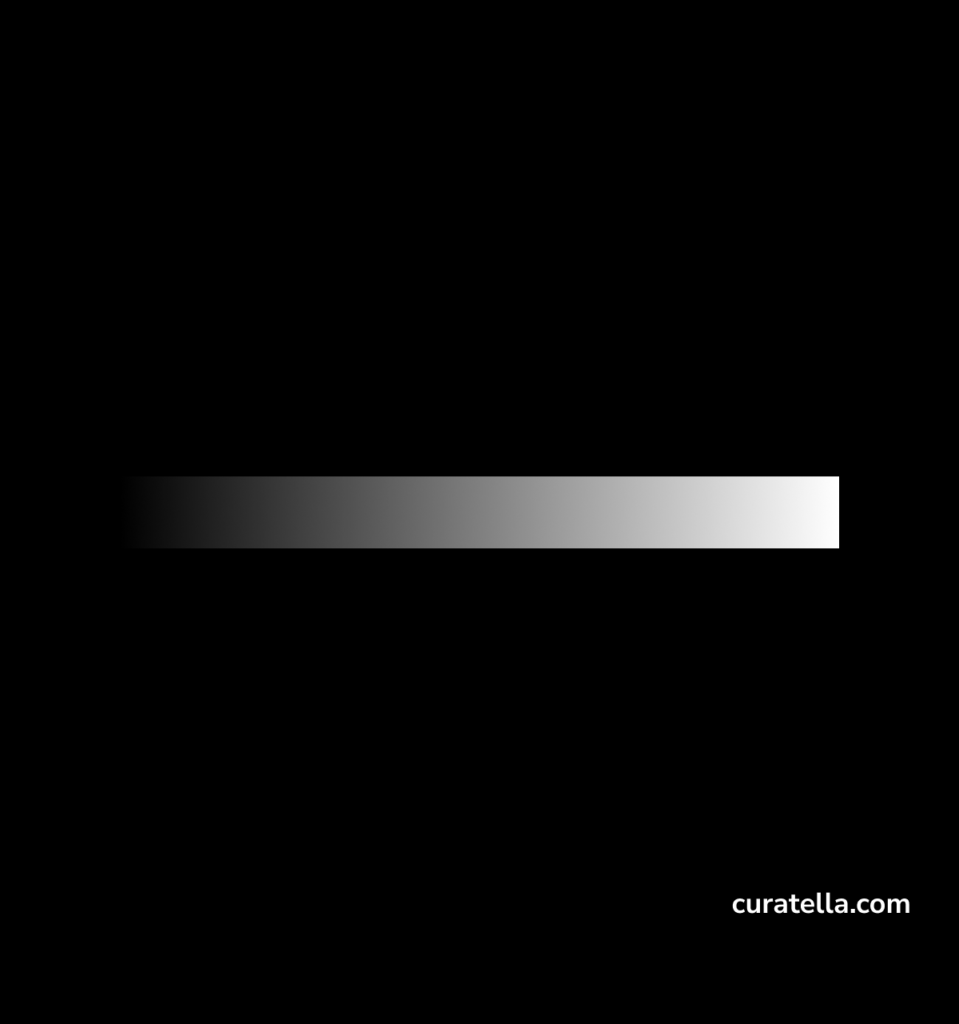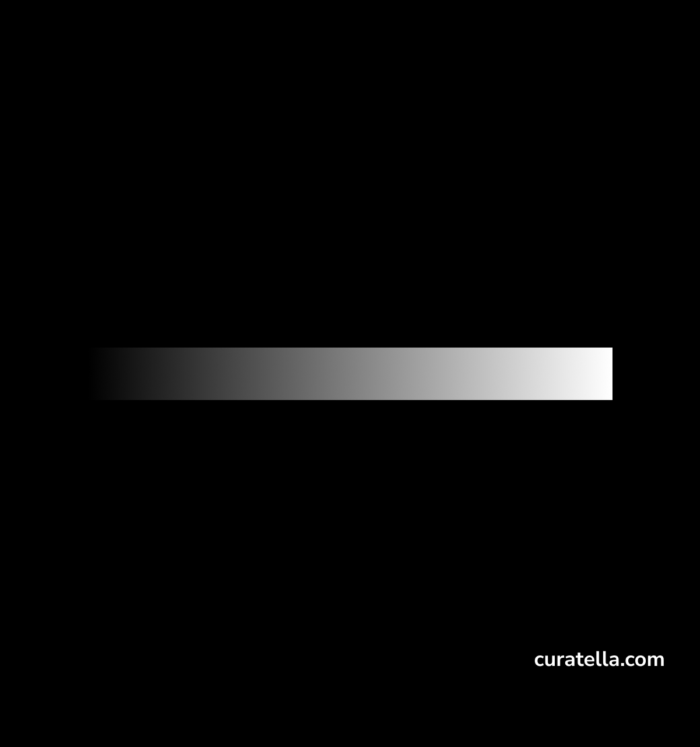A gradation is a set of intermediate steps or values between two extremes. Why is that interesting? It’s sporadic to find absolute values in nature that are always exactly the same.
It’s more a matter of minuscule differences around a value. It’s immediate to associate gradations with colors. If I think of “red” as a color, it will be something, very likely, different from the exact shade of color that another person would intend.
The word “gradient” comes to my mind, a transition between two values. The gradation can be smooth, or it can be jagged with perceivable steps.
The color spectrum is a scale of colors, the visible between red and violet and the invisible to human, the infrared and the ultraviolet.
Talking about scales, I think about music. If you want to practice with an instrument, The first thing you do is playing scales. You play each note in increasing sequence from the lowest to the highest, and then you go back. In this case, the gradation is made of steps.
The step size determines the granularity of the gradation. The larger the step, like a staircase, the bigger the walk to climb it. With infinitely small steps, you would have a ramp or a slide.
We also can have a gradation of emotions. In a wheel of emotions, between being angry and happy, there are many gradations. And this comes along with the related words to express those emotions. From calm to quiet, agitated, nervous, anxious, excited, happy, elated, hilarious, there can be a nice progression of words in a gradation.
Something similar happens for tastes and cooking. For instance, different mixtures and quantities of ingredients combined can create different gradations of flavors. The same goes for smell and perfumes. Think about how a cook or perfume designer will create the recipe the same as a musician or a writer, or a painter would do with notes, words, and color.
A gradation is associated with intensity, value, scales, and precision because the more diverse gradations you know, the more precise you can be in your expression.
The same will be with color. Think about “Rosso Ferrari” or the darkest color ever invented, the umami taste, or the captivating and weird notes John Coltrane composed in his musical pieces.
A creative game of finding all the gradations around the key and putting them in a circle or a sequence or a gradient can be a valuable way to organize your tools. According to the context, you can assign different gradations.
Gradation is a phenomenon and a range of tools. The more gradations you have in your toolbox, the more precise and effective you can be when you want to express, design, and communicate.
Knowing gradations means recognizing more patterns, having a richer perception, and a richer capability to express yourself.


Leave a Reply